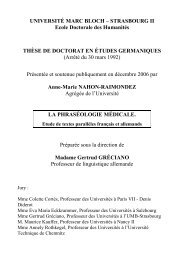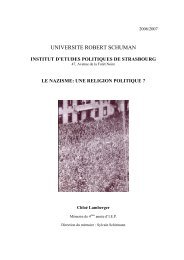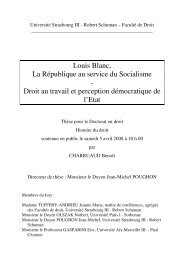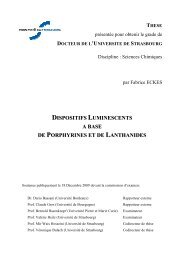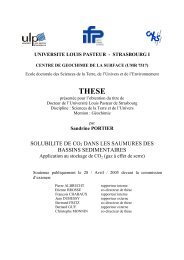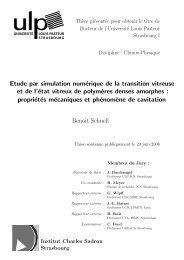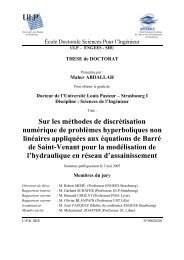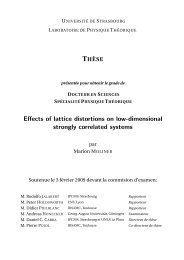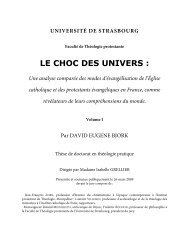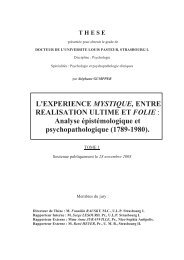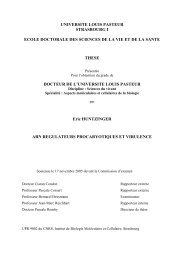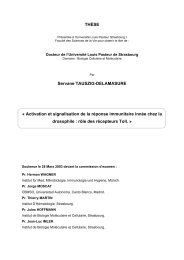Économie Évolutionniste et Culture d'Entreprise
Économie Évolutionniste et Culture d'Entreprise
Économie Évolutionniste et Culture d'Entreprise
You also want an ePaper? Increase the reach of your titles
YUMPU automatically turns print PDFs into web optimized ePapers that Google loves.
La croissance en profitabilité est supposée ici refléter la progéniture. Ce sont les traits caractéristiques des<br />
ressources productives qui sont sélectionnés <strong>et</strong> reproduits, pas les firmes. La reproduction différentielle<br />
perm<strong>et</strong> le maintien des traits d’un certain type de ressources productives synonymes de profitabilité. Or,<br />
la profitabilité est le résultat d’une adaptation. Que Nelson <strong>et</strong> Winter aient qualifié leur évolutionnisme de<br />
Darwinien aurait donc été plus approprié comme le soulignent plusieurs auteurs (par exemple, Knudsen,<br />
2000a,b, 2001 ; Hodgson, 2003). La qualification Lamarckienne brouille la vision, <strong>et</strong> même, suivant<br />
Hodgson (2003), la référence au Lamarckisme divertit l’attention de l’analyse de la véritable contenance<br />
(qu’il pense Darwinienne) de l’évolution économique :<br />
The proclamation that socio-economic evolution is “Lamarckian” diverts attention (…) and discourages any discussion of the<br />
extent to which socio-economic is actually (and not merely by analogy) Darwinian in some meaningful and significant sense.<br />
(Hodgson, 2003, p. 359).<br />
[S]uch caginess and “Lamarckian” mis-labelling have helped to impair the further exploration of the strategy to which they<br />
were implicitly committed. (Hodgson, 2003, p. 367).<br />
Le constat de Hodgson (2003) mais également de Knudsen (2000a,b) est manifestement vrai : Nelson <strong>et</strong><br />
Winter ont construit une approche Darwinienne de l’économie, en la dépeignant d’une (fausse)<br />
appellation Lamarckienne :<br />
[Nelson and Winter] also described their theory as “Lamarckian,” where its implicit Darwinian content might also warrant a<br />
“Darwinian” description. (…) The relationships and connections b<strong>et</strong>ween An Evolutionary Theory of Economic Change and<br />
Darwinian theory should now be obvious. (Hodgson, 2003, p. 356-358).<br />
Nelson & Winter (1982) describe micro-evolutionary processes as Lamarckian whereas they view macro-evolutionary<br />
processes of comp<strong>et</strong>itive interaction as Darwinian in some sense. At first glance this seems curious since the two forms of<br />
evolution are usually thought of as mutually exclusive. Of course, this really depend[s] upon what is understood by<br />
“Darwinian” and “Lamarckian” evolution in the context of economic evolution. (Knudsen, 2000a, p. 2-3).<br />
C<strong>et</strong>te ambiguïté quant à la posture Lamarckienne ne se limite d’ailleurs pas à Nelson <strong>et</strong> Winter. Elle<br />
commune à une grande part des approches évolutionnistes en économie (Knudsen, 2000a, p. 18).<br />
Or, nous avons vu dans le chapitre 1 que l’analyse Darwinienne (en terme de sélection naturelle) marque<br />
de sérieuses limites pour l’explication de l’évolution économique. Seule une analyse Lamarckienne peut<br />
expliquer le processus de rétention de caractéristiques acquises résultant d’une adaptation volontaire des<br />
firmes. Toutefois, comme pour les fondations micro-évolutionnaires du modèle de Nelson <strong>et</strong> Winter,<br />
Hodgson pense là également pouvoir sauver le modèle. Il avance alors l’idée de fusionner le<br />
Lamarckisme <strong>et</strong> le Darwinisme dans l’analyse de l’évolution socio-économique :<br />
Lamarckism and Darwinism are often posed as alternatives, whereas in key respects Lamarckism requires Darwinism as a<br />
complement. (Hodgson, 2003, p. 360).



